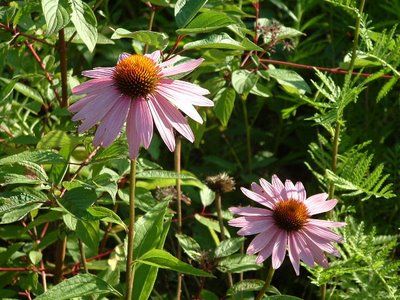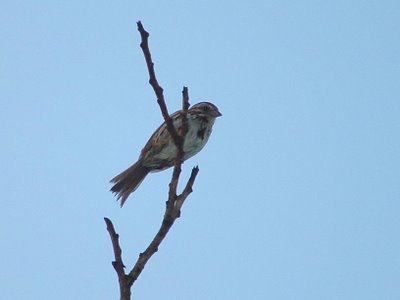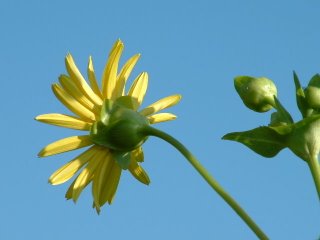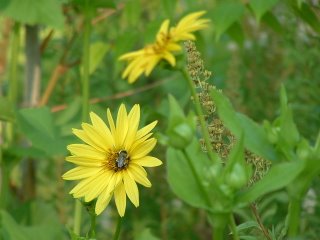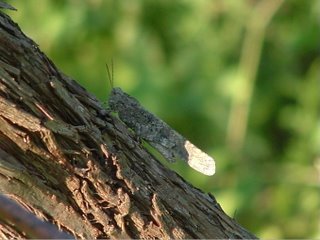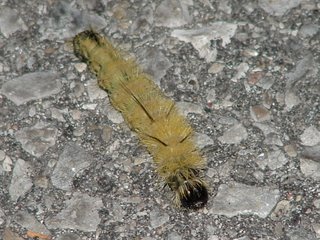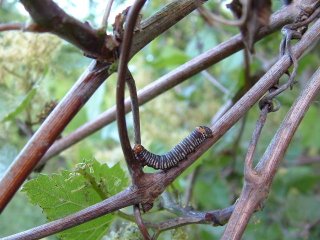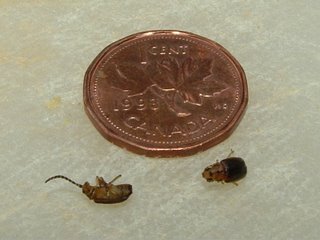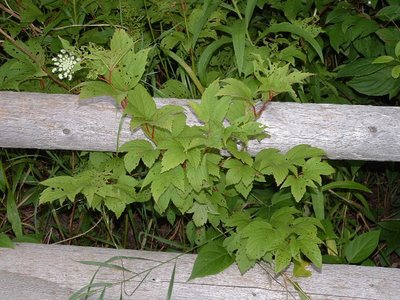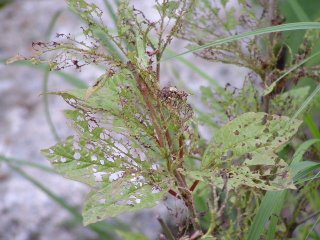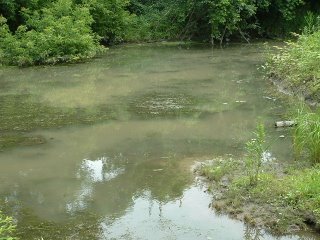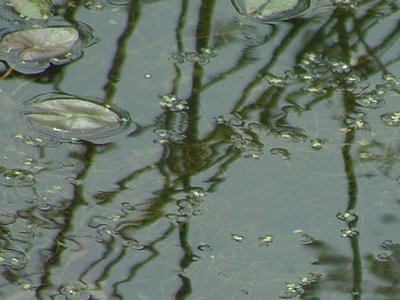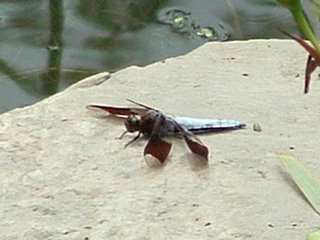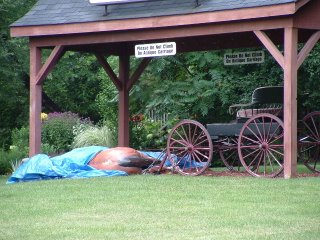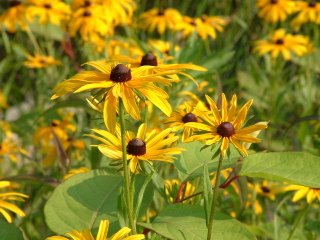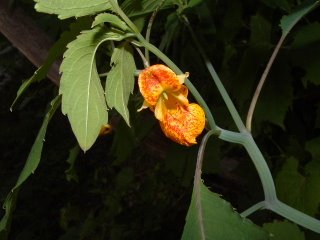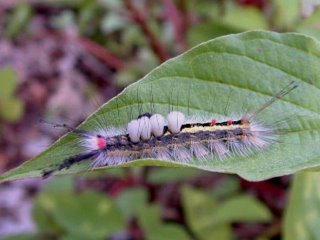The Japanese knotweed suffered a serious blow last night as we attacked it from all sides. Team members spread out across the site and cut down all the JK we could find. Here's a look at the knotweed graveyard, with the bones of plants cut down in previous years:
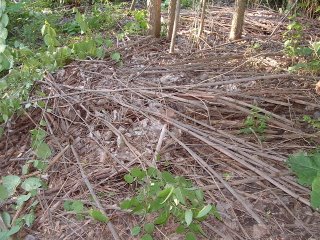
You can see the segmented stems that give JK the nickname "Japanese Bamboo":
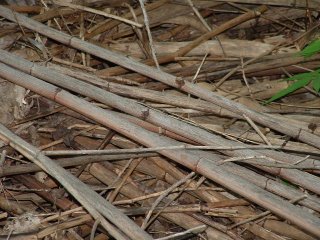

After the annihilation of the knotweed we turned our attention to other pests like Tree of Heaven. This is a pretty thing, but invasive. It has a strong, distinctive scent that some people find revolting; I've heard it described as "nauseating" and "like garbage."

To me (and others I've talked to) it smells like a kind of rich, complex peanut butter. I wonder if it's one of those genetic differences like the ability to taste a certain substance? Tree of Heaven looks a lot like our native staghorn sumac, but it has smooth leaf edges instead of sumac's serrated ones, and it lacks the fuzzy stems of the sumac. I remember that "stags have teeth" and "peanut butter is smooth." Those of you who don't think Tree of Heaven smells like peanut butter or who prefer your PB crunchy will have to think of your own memory aids. The reddish colour at the tips of young Tree of Heaven branches is another help in identifying native vs. alien.
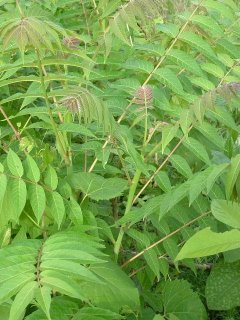
"Swath of destruction" was a popular phrase as we cut our way through JK, Tree of Heaven, Japanese honeysuckle and Manitoba maple.

This clear-cutting revealed another spotted jewelweed, so it wasn't all bad:

At the end of the evening we gathered in a circle, and while John filled in the weekly report we compared ant bites, mosquito bites and stinging nettle rash. I hit the jackpot and managed to acquire all three. I'm pretty sure those ants are out to get me. Tucking my pant legs into my socks keeps them off my legs, but they still manage to scramble down the neck of my shirt or into my gloves at every opportunity.
